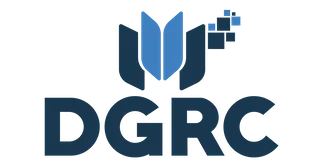What is computer science?
Computer science is the study of algorithms, models, and practices in order to process data. This includes studying how to create, store, access, and analyze information. Computer scientists also work on developing new technologies and improving existing ones.
In essence, computer science is the study of information and the application of computational methods to process it. It is a foundational science in that many other sciences rely on it for their own investigations. For example, biologists use computers to analyze DNA sequences, chemists use computers to model molecules, and economists use computers to simulate financial markets.
The field of computer science also takes a scientific and practical approach to computation and its applications. This means that researchers in the field not only seek out new ways to solve computational problems, but they also work to develop the theory and practice behind these solutions.
In addition, computer science is unique in that information is usually referred to as something that is encoded in bits and bytes. This perspective helps researchers and practitioners understand how digital technology works and how it can be used to process, store, and transmit information.
These are some of the main areas of computer science:
- Theory of computation focuses on algorithms and data structure.
- Information and coding theory looks at databases.
- Programming language theory uses formal methods in developing programming languages.
- Artificial intelligence involves computer systems that are designed to perform tasks autonomously that have traditionally required human input (for example: sensors or predictive software)
- Computers networks focus on the communication between computers or machines in a networked environment, where multiple devices share resources or collaborate with one another.
- Computer security refers to the protection of digital information from unauthorized access or destruction.
Most Frequently Asked Questions about Computers
History of computer science
The field of computer science is relatively new, with the first computer program being created in 1842. The first computers were developed in the early 1900s, and by World War II they had become important tools for military applications. Some further discoveries in computer science occurred during the 1940s to 1950’s time period. This included early work on algorithms, computation, and information management.
In 1948, John McCarthy published a paper on what is now known as McCarthy’s theorem. The paper showed that formal languages could be used to model computations. The first electronic computer was built in 1951 and it was used for research in artificial intelligence (AI) and mathematical modeling.
Arthur Samuel’s program in 1961 heralded the arrival of big data analytics and modern computing platforms. This was possible because his program could solve large linear systems of equations, which is what underpins big data analytics. Additionally, computer science has allowed for the development of algorithms used by Google Search and Facebook ads targeting algorithms.
Subfields of computer science
Computer science is a vast and ever-growing field. It covers a wide range of topics, from the basics of computation to more advanced concepts like artificial intelligence and machine learning. Some popular subfields of computer science include:
- Advanced internet: This area of study focuses on understanding how the internet works at a deep level and developing new technologies that improve online experiences.
- Advanced programming: This area of computer science focuses on developing new ways to write code, making it more efficient and easier to use.
- Artificial intelligence and artificial life: This area of study explores how computers can be made to act intelligently, including creating simulated environments where AI can be tested.
- Computational logic: This branch of computer science deals with the theoretical foundations of computation, including the design and analysis of algorithms.
- Computer graphics: This area of computer science focuses on creating images and animations using computers.
- Computer modeling: This area of study involves creating models of real-world objects and systems using computers.
- Computer networks: This area of computer science focuses on the design and implementation of computer networks.
- Computer security: This area of study is concerned with protecting digital information from unauthorized access or theft.
- Software engineering and design: This field deals with the creation and maintenance of software applications.
Theoretical computer science
Theoretical computer science is a field of computer science that deals with the design and analysis of algorithms. It encompasses coding theory, algorithmic information theory, and signal detection theory. These three subfields focus on understanding different computational problems.
In addition, programming language theory deals with the design of programming languages and their features. It also examines how these languages affect mathematics , software engineering and linguistics .
Formal methods are mathematical techniques used to help ensure the reliability and robustness of a design. Formal methods are considered an important part of computer science, with numerous dedicated academic journals. They’re also used in safety and security systems where ensuring correctness is essential.
Theory of Computation focuses on answering questions about what can be computed or how much resources are needed for such a computation.
Computability Theory examines which problems are solvable on different theoretical models of computation.
Computational Complexity Theory studies the time and space costs associated with different approaches to solving computational problems.
Applied computer science
Computer Science is the application of knowledge about computers and their workings to solve problems across a variety of disciplines. This includes modeling and simulating physical systems, creating art, developing new software or improving on existing software, and analyzing data.
The applied computer science is for the concepts that can be applied in any environment or situation. It involves practical applications that can be put into use right away.
Programming paradigms
A programming paradigm is a framework that developers use to organize and develop their code. There are a variety of different paradigms such as imperative, functional, object-oriented and service oriented.
In imperative programming, the programmer gives instructions to the computer in a step-by-step manner. Imperative languages are also called procedural languages, and they are often contrasted with declarative programming paradigms. In natural languages, imperative commands are expressed as sentences.
Functional programming is a declarative programming paradigm. In other words, functional programming is a way of specifying computations by describing what the results should be, rather than how to get there.
Object-oriented programming is a type of programming paradigm in which a program is composed of objects that interact with one another. In object-oriented computing, these objects are the fundamental building blocks of computation. The most popular programming language in this paradigm is Java.
Another programming paradigm is service-oriented programming. This approach uses services as the fundamental unit of computer work. With this paradigm, you can design and implement integrated business applications and mission critical software programs.
Related disciplines
Computer science is a broad and diverse field that has applications in many different areas. Some of these include modeling simulations such as the impacts of climate change and Ebola virus, data management and information retrieval, creating art and visualization through graphics rendering, and simulating human interfaces using artificial intelligence (AI) and machine learning.
Information technology
Information technology (IT) covers a wide range of activities, from the design and development of new software, to the management and use of information resources.
IT technicians are responsible for overseeing an organization’s ICT infrastructure. This includes installing systems, backing up data, and providing IT support to users. They must also stay current with software licensing laws and ensure that the company’s ICT facilities meet certain needs.
The tasks of these professionals involve installing systems, backing up data, providing IT support to users etc., while meeting certain needs of the company within budget constraints
Information systems
Information Systems (IS) managers are responsible for the secure and efficient operation of computer systems within their company. They work with a team of IT staff who may be required to oversee IT systems, purchase hardware and software, set up secure access for all users, and provide support when needed.
Computer engineering
Computer engineering is a discipline which deals with designing, implementing, and using computers. It covers a wide range of topics from software development to network administration.
There are multiple programming languages which developers use depending on their needs. Some common languages include Python, Java, and C++.
Software engineering
Software engineering is the study of designing, implementing, and modifying software so that it is high quality. It involves applying engineering practices to software design.
One such practice is using a model-based approach, which starts with creating models of the system. In this way, engineers can focus on specific aspects of the system and avoid wasting time on tasks that are not essential to the system’s operation.
Testing is also an important part of software engineering. A good testing process helps ensure that defects are found early in the development process, when they are still relatively easy and inexpensive to fix.



